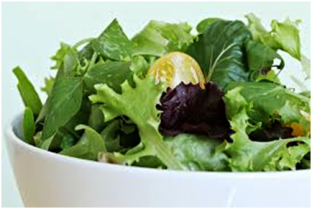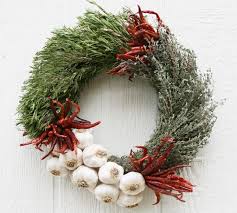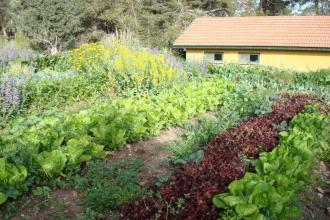Another week has started, more hope for rain.
Another gaze toward the sky, another sigh on behalf of our winter vegetables, that signal their tired eyes toward the calendar, where the days are end of November and there is no sign of rain. In other countries, where their relatives grow – like radishes, potatoes, kale, and speak with an accent with rolling letters or words that sound like they're being whispered, it has snowed long ago, or at least, some good rains have washed through the fields. Winter in its full glory. And just here, in the Holy Land, they silently complain, the farmer in the fields is still walking around in sandals and a short shirt. Soon, we comfort them, just a little longer, and the rain will come. This time, I decided to write a few words about what usually characterizes this season when it is at it's best – green leaves. Hopefully these words will bring inspiration and rain.
Green all around. That is what you see after the first rains wash the earth. After the dryness of the end of summer, the arid, dry landscape colored with shades of yellow and brown, suddenly the rain brings life to the tired plants, germinating the sleepy seeds, and slowly the ground covers with green. This green also reaches our store, and your vegetable boxes. For those who gaze and contemplate in front of the abundance of leaves in the box, I can offer a rule of thumb: those that look delicate, with no thick stems – such as swiss chard, radish or beet leaves, baby leaves and the sort- because they are usually edible raw, it is best to give them the finest treatment to preserve all the nutritional values they hold within them.
You can add them to a salad or shake, and if the taste is too pungent – you can slightly brew them and make a "half hot" salad. Whatever needs to be cooked / fried / baked, like New Zealand spinach (don't eat it raw), keep aside, for quiche/ soup / sauté recipes. Green leaves that have succulent and tasty green veins, like kale, can be divided into two –some of the leaves for salad, or roasted chips in the oven (delicious with just coarse salt) and the remaining leaves chould be squeezed into juice, together with half a lemon and a green apple, run thorugh the machine with their peel. The added tingling flavor it adds to the juice is really something.
One of the less known greens is the Mizuna. It is often called "one of those in the box of baby leaves", although it has its own right of existence – it belongs to the mustard family, and is sometimes referred to as "Japanese mustard," after the people who cultivated it (in English it is called also spider mustard – probably because of the shape of the leaves). The reason it is less familiar than its colleagues in the baby leaves package, such as arugula, is its relatively delicate taste, almost unnoticeable compared to the spicy mustard flavor of its other relatives.
Although the reddish variety is slightly spicier, it still can't be compared with chewing a handful of arugula leaves. The typical use of mizuna to garnish the plate for other dishes is clearly unjustified – not only does it contains fine amount of vitamin A and vitamin C, it is also very tasty when cooked or sauteed.
Next week I will tell you about other green leaves we have, hopefully by then they will arrive wet (dry well before storing in the fridge!)
Maggie's Garden Team
Forecast:
In the ORGANIC vegetable baskets we expect (draft only):
Cucumber
Tomato
Lettuce
Potato
Cabbage
Eggplant
Parsley
Pumpkin
Kale
The LARGE organic vegetable baskets also include:
Spinach
Coriander
Pepper
In the ORGANIC fruit baskets:
Sweetie
Orange
Banana
The large ORGANIC fruit baskets also include:
Pomelo
Clementine
New! New! The ORGANIC Green Basket:
Swiss chard
Celery
Green Onion
Argula
Dill
A kind of lettuce
Mint
Sprouts











